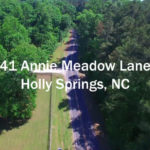Video Production Tips from a Professional Photographer and Videographer
Jeff: Hello, everyone and thank you for tuning in to this week’s webisode. I’m, Jeff Philips and every week I bring in a different business to help share tips and valuable information for you and today I’m really happy that I have Phil, and Phil welcome to the show.
Phil: Good to meet you all.
Jeff: Yes, and why don’t you explain to the viewers a little bit about yourself.
Phil: I’ve been in the video production business for 22 years now and I’ve probably done a thousand hours of footage easily and I’m going to concentrate mostly today on the documentary approach because I think it’s going to help viewers who are actually involved in getting better and better with their camera work.
Jeff: Okay, so let’s get right into it. What could you suggest to the viewer to help keep their camera stable?
Phil: Okay, I actually have a prop today.
Some of us call this a camera. I want to get the positioning right which is really important for getting stable work out of filming because a lot of you are going to film more on the fly because things are happening fast such as a birthday party or a family event or a family get together. One of the things I’ve learned over the years in good stability is actually to create the triangle with your arm against your body and which is going to be more this kind of thing.
Why you are bringing it in to the body because after holding it straight and up for five, 10, 20 minutes depending on your weight structure, you wind up having the shake going on and you don’t even notice at times, you are not even aware of it. Here is another point for bringing it in to the body. Since they all flip out, we are going to hold it on the side here. Now, we have ourself the triangular setup. We have the hand on the view finder and we are able to then zoom in and zoom out or pan right and pan left and by the way the slower your pan, the easier to see the results on the screen and the slower you zoom, the easier it is to not feel like you are over zooming your zoom.
Jeff: Okay, so speaking of zooming. Why don’t you talk a little bit about the zoom button and why would you want to zoom.
Phil: Sure. Obviously the zoom gets you closer to your subject and obviously if you are rolling, you want to do that as smooth as possible, so it doesn’t look like an earthquake taking place. You want to make a decision on your zoom. If it’s a human you are actually looking at, you are going to come in to that human for a reason. You slowly zoom in, so you are intensifying their actual conversation to you.
Jeff: Okay, great. One thing too is that the more you zoom in, the more you said the emotion of the person or whatever you are filming intensifies but also does the shake in the camera.
Phil: It will intensify, you have a couple of advantages here now because most of this cameras have optical stability. We all know the best solution would be to get yourself a tripod which then you can assure yourself an absolutely good stable and what I would consider much better quality images. You put yourself a little bit above other filmmakers because of the fact that you know more about how to control the camera.
Jeff: Exactly. Why don’t you explain a little bit what can be interpreted by shooting at different height?
Phil: Okay. there is a height principle. Film making, video production, is a language, just like English, Spanish, French, German, they are languages. We are visually and audibly communicating an experience and we are describing this matter, so this is really important that we do it in the best possible conditions.
Over the years, I’ve learned that a low angle is very good in giving somebody a more grand stature about looking up at them. The average height alteration would be is if you are in a conversation. You are standing and you are holding it. All right, so we have the low angle, we have the eye view and then we have the high angle which actually is communicated as diminishing a person. You are looking down upon them and what is an interesting side point, I do not film kids looking down upon them. I don’t think that is being at their level.
Jeff: Yeah, that’s a good tip. I think this is a great start for any home movie maker or beginning videographer, whatever the case maybe.
Phil: We never stop learning in the film production business. It’s completely amazing how it keeps expanding, technology wise and substance wise and storytelling wise. Just like in writing English, a good story has a beginning, middle and end and that’s the way you should consider your approach to any event or anything you are about to tell about the family. Everybody is using the web now, a forum is a great place to interact and learn.
Jeff: Awesome. Thank you for your time. I appreciate the tips and hopefully you all got a lot out of this as well. If you found this video valuable, it’s your first time hanging out with us, I’d love to have you subscribe at www.infocusstudios.com or subscribe to us on the In Focus Studios YouTube channel and feel free to leave any comments below this video, we’d love to hear from you and hopefully follow up and give some more tips and advice. Thanks a lot and see you next time.



